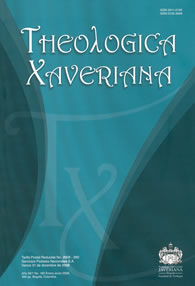Resumo
La identificación del discípulo amado en el cuarto Evangelio (Evangelio de Juan) ha dado pie a muchas y diversas interpretaciones en el curso de los siglos. La poca atención a la narración y el olvido de los antiguos comentarios (como el de Orígenes) hacen que las propuestas abunden y que interpretaciones absurdas tomen forma y sean difundidas. En este artículo, la afirmación central es que, con base en dos textos joánicos (1,18 y 13,23), el discípulo amado es un prototipo y no puede ser identificado. Con base en esta afirmación, se desarrolla también, brevemente, el tema de la tipología y su funcionamiento dentro del texto joánico. La primera parte centra la atención en el análisis de los dos textos para establecer su relación exegética y su consecuencia hermenéutica, que incide sobre la identificación del discípulo amado. La segunda parte se dedica a la tipología en el Evangelio de Juan, para establecer el modo como funciona la figura del discípulo amado.
Esta revista científica se encuentra registrada bajo la licencia Creative Commons Reconocimiento 4.0 Internacional. Por lo tanto, esta obra se puede reproducir, distribuir y comunicar públicamente en formato digital, siempre que se reconozca el nombre de los autores y a la Pontificia Universidad Javeriana. Se permite citar, adaptar, transformar, autoarchivar, republicar y crear a partir del material, para cualquier finalidad (incluso comercial), siempre que se reconozca adecuadamente la autoría, se proporcione un enlace a la obra original y se indique si se han realizado cambios. La Pontificia Universidad Javeriana no retiene los derechos sobre las obras publicadas y los contenidos son responsabilidad exclusiva de los autores, quienes conservan sus derechos morales, intelectuales, de privacidad y publicidad.
El aval sobre la intervención de la obra (revisión, corrección de estilo, traducción, diagramación) y su posterior divulgación se otorga mediante una licencia de uso y no a través de una cesión de derechos, lo que representa que la revista y la Pontificia Universidad Javeriana se eximen de cualquier responsabilidad que se pueda derivar de una mala práctica ética por parte de los autores. En consecuencia de la protección brindada por la licencia de uso, la revista no se encuentra en la obligación de publicar retractaciones o modificar la información ya publicada, a no ser que la errata surja del proceso de gestión editorial. La publicación de contenidos en esta revista no representa regalías para los contribuyentes.


